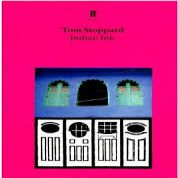
Overview
Synopsis
Spanning five decades and two continents, Indian Ink is one of Tom Stoppard’s most ambitious plays. Like Arcadia, which Stoppard wrote at about the same time, Indian Ink satirizes the self-importance of aristocracy and academia, celebrates the achievements of intellectuals and artists, explores the costs of expressing sexual drives in a repressed and conservative society, and mourns the ephemeral nature of human life. Indian Ink chronicles the final weeks in the life of fictional English poet Flora Crewe, including her unlikely and intimate friendship with Indian painter Nirad Das. Meanwhile, in the 1980s, Flora’s now-elderly sister Eleanor speaks to two men with vested interests in uncovering what happened to Flora in 1930. As in the final scene of Arcadia, Indian Ink alternates between past and present scenes in quick succession, and sometimes puts them onstage simultaneously. The play is painstakingly researched, and is informed by Stoppard’s encyclopedic knowledge of literary history, his considerable familiarity with Indian culture and tradition, and his personal experiences growing up in India.
Show Information
Context
Plot
Characters
| Name | Part Size | Gender | Vocal Part |
|---|---|---|---|
|
Lead |
Female |
Spoken |
|
|
Lead |
Female |
Spoken |
|
|
Lead |
Male |
Spoken |
|
|
Lead |
Male |
Spoken |
|
|
Lead |
Male |
Spoken |
|
|
Supporting |
Male |
Spoken |
|
|
Supporting |
Male |
Spoken |
|
|
Supporting |
Male |
Spoken |
|
|
Supporting |
Male |
Spoken |
|
|
Supporting |
Female |
Spoken |
|
|
Supporting |
Male |
Spoken |
|
|
Featured |
Male |
Spoken |
|
|
Featured |
Male |
Spoken |
|
|
Featured |
Female |
Spoken |
|
|
Featured |
Male |
Spoken |
|
|
Ensemble |
Male |
Spoken |
|
|
Ensemble |
Male |
Silent |
Songs
A song with an asterisk (*) before the title indicates a dance number; a character listed in a song with an asterisk (*) by the character's name indicates that the character exclusively serves as a dancer in this song, which is sung by other characters.
Monologues
Scenes
Key Terms
Sorry! We do not currently have terms for this guide.
Videos
Quizzes
Sorry! We do not currently have quizzes for this guide.
Themes, Symbols & Motifs
Sorry! We do not currently have learning modules for this guide.
Quote Analysis
Sorry! We do not currently have learning modules for this guide.
